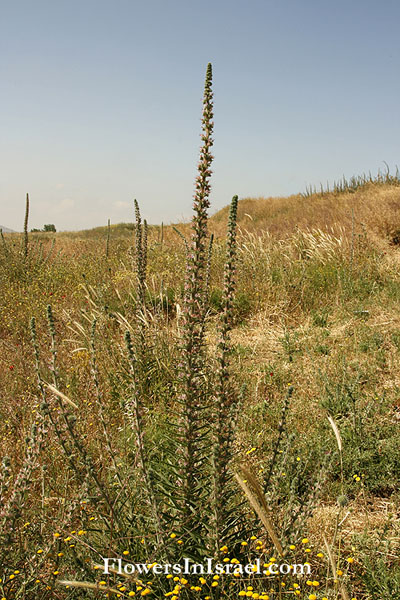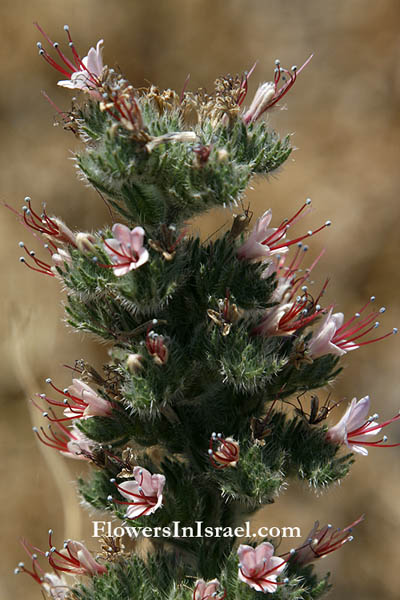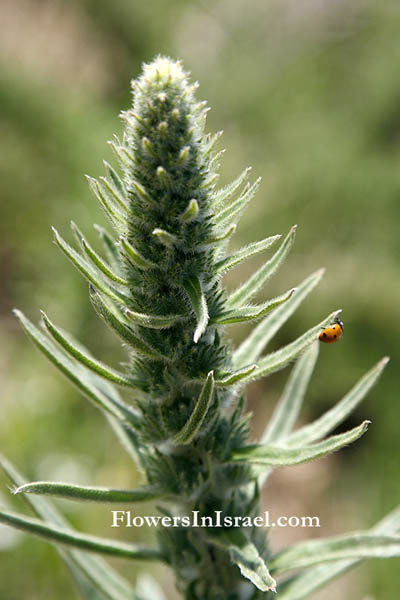Hebrew: עכנאי מגובב, Arabic: حميم
| Scientific name: | Echium glomeratum Poiret | |
| Common name: | Tall Viper's-bugloss | |
| Hebrew name: | עכנאי מגובב | |
| Arabic name: | حميم | |
| Family: | Boraginaceae, זיפניים |

|
| Life form: | Hemicryptophyte | |
| Stems: | 60-200 cm; one main and several side stems from a basal leaf rosette | |
| Leaves: | Alternate, entire | |
| Inflorescence: | Axillary clusters of densely packed pink flowers | |
| Flowers: | Pink | |
| Fruits / pods: | Nutlets | |
| Flowering Period: | April, May, June | |
| Habitat: | Batha, Phrygana | |
| Distribution: | Mediterranean Woodlands and Shrublands, Montane vegetation of Mt. Hermon | |
| Chorotype: | Mediterranean | |
| Summer shedding: | Perennating |

Derivation of the botanical name: Echium, echis, "a viper," the nutlets appearing to represent a viper's head. glomeratum, collected closely together into a head. Bugloss(Greek origin), means ox tongue, apparently because of the roughness of the leaves. The hebrew word עכנאי, akhnai, by the foreign name echium, derived from echis, a viper.


|